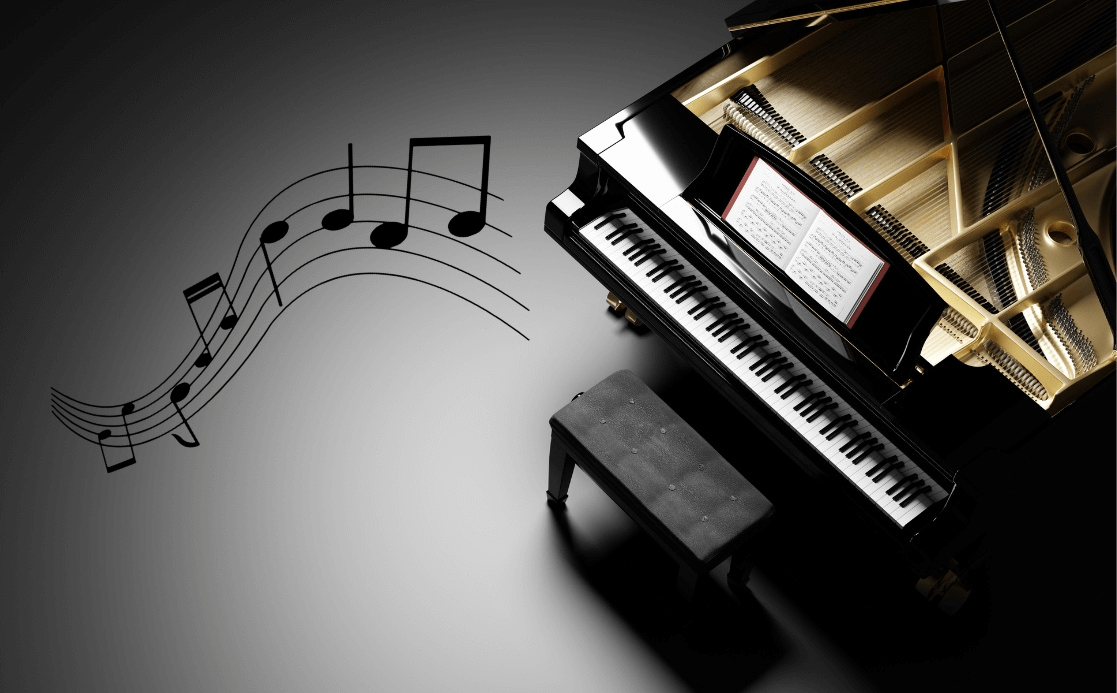Top Piano Abbreviations Every Pianist Must Know

Reference – Keyboard for Dummies
Keyboard manuals frequently employ abbreviations and terms that might seem unfamiliar at first. However, comprehending these terms is crucial to maximizing the potential of your electronic keyboard. Here's a comprehensive glossary of common keyboard terminology you may come across:
Action: Pertains to the mechanical design of the keyboard's keys, influencing the tactile feel or touch.
ADSR: Abbreviation for Attack, Decay, Sustain, and Release – a four-stage envelope generator that shapes sound dynamics.
Aftertouch: A rubber strip used to increase pressure sensitivity detects the control signal generated by pressing a key after the note has started to sound.
Arpeggiator: A feature generating repeated note patterns from held chords or notes.
Assignable controller: A device like a wheel, knob, or slider that can be assigned to manipulate specific parameters, like pitch or filter cutoff.
Attack: The initial phase of a sound, determined by the first stage of an envelope generator.
Auto-accompaniment: A function producing background performances from simple note or chord input.
Bit depth: Part of digital audio specifications, representing the resolution of encoded data from analog sources. Affects sound quality, often 16 or 24 bits.
Controller: 1. A component like a wheel or a knob sending MIDI messages to modify the sound. 2. A MIDI device not producing sound but triggering other devices.
CC (Control Change): Variable MIDI message altering a parameter, identified by a control number (0–127) with corresponding values.
C/V: 1. Control Voltage, used in analog synthesis. 2. Chorus/Vibrato circuit in some organs.
Cutoff: Frequency point at which a synthesizer's filter starts passing or blocking an audio signal.
Damper pedal: Also called sustain pedal, sustains notes until released.
Decay: Second stage of an ADSR envelope, influencing the rate of change from attack to sustain.
Drawbar: A specialized organ slider controlling specific overtones in the sound. Common on tonewheel organs.
DSP: Digital Signal Processing, a modern digital keyboard method for sound generation and modification.
Effects: Signal processing alters sound characteristics like reverb, chorus, delay, and distortion.
Envelope: Sound's dynamic changes over time, often modulated by an envelope generator.
Envelope generator: Source changing a parameter's value over time, frequently used for pitch, timbre, and volume modulation.
Filter: Function modifying a sound's tone by emphasizing or reducing specific frequencies.
Fine Tuning: Adjusting sound pitch by small increments (less than a half step), often represented in cents or hertz.
General MIDI (GM): Industry standard defining sounds, effects, and control change messages for consistency across devices.
Glide: Smooth pitch transition between notes, also known as portamento.
Graded action: Keyboard mechanism emulating the weight distribution of a grand piano, lighter keys for higher notes.
Half pedaling: Gradually pressing a damper pedal for nuanced sustain, more expressive than basic on/off behavior.
Hammer action: Mechanism simulating piano keys' feel with pivoting hammers, even in electronic instruments.
Jack: Input receptacle or female connector with different sizes and standards.
Keybed: 1. Sometimes inaccurately used to describe keys and mechanisms. 2. In a piano, the base or frame supports the key mechanism.
Low-frequency oscillator (LFO): Inaudible oscillator modulating a parameter periodically, like pitch (vibrato) or volume (tremolo).
Layer: Playing multiple sounds simultaneously from the same keys.
Local Control: MIDI message deciding if a keyboard affects its internal sounds. On for normal playing, off for MIDI sequencing.
MIDI: Musical Instrument Digital Interface, a protocol enabling communication between instruments and digital devices.
Modulation: Altering a parameter via sources like LFOs or envelopes.
Modulation wheel (mod wheel): Controller altering tone elements, often vibrato. It can be a joystick or wheel.
Multitimbral: Instrument playing multiple sounds at once on different MIDI channels.
Oscillator: Sound source generating or playing back waveforms.
Pan: Sound's left-right position in stereo.
Parameter: A feature affecting sound, like reverb size or filter cutoff.
Pitch bend wheel: Controller altering pitch up or down. Returns to center when released.
Plug: Male connector inserted into a jack for connection.
Polyphony: Number of simultaneous notes a keyboard can play.
Portamento: Smooth pitch transition, also called glide.
Preset: Stored sound in memory, also called patch, program, or voice.
Quantize: Sequencing process aligning notes to selected rhythmic values.
Random-access memory (RAM): Rewritable memory, like sample storage.
Rhythms: Built-in drum patterns and grooves on keyboards.
Release: Envelope generator's last stage, starting after key release.
Resonance: Boosts frequencies near filter cutoff, emphasizing tonal qualities.
ROM: Read-only memory, permanent storage.
Sampler: Records, edits, and plays digital audio.
Semi-weighted action: A slightly heavier key mechanism for a solid feel.
Sequencer: Hardware/software recording, editing, and playing back MIDI data.
Sostenuto pedal: Middle pedal on pianos sustaining held notes.
Split: Divides keyboard for different sounds in separate zones.
Standard MIDI File: Shareable MIDI song file for GM-compatible keyboards.
Style: Arranger/autocomp pattern used in keyboards.
Synchro Start: Parameter starting patterns when a key is played.
Sustain: Second-to-last stage of an envelope, maintaining value after decay.
Temperament: Tuning system within a scale.
Tempo: Pulse speed, measured in BPM.
Timbre: Sound's tonal quality.
Transpose: Shifts keyboard tuning in half steps.
Tuning: Adjusting pitch, including transposing and fine-tuning.
Universal Serial Bus (USB): Common connection protocol.
Velocity: Keypress force affecting volume and parameters.
Velocity sensitivity: Key mechanism's responsiveness to speed, altering volume, and more.
Vibrato: Pitch modulation for waver.
Waveform: Sound building block, varied shapes affecting tone.
Weighted action: Key mechanism with mass for piano-like touch.
Zone: Key groupings for splits and layers.
